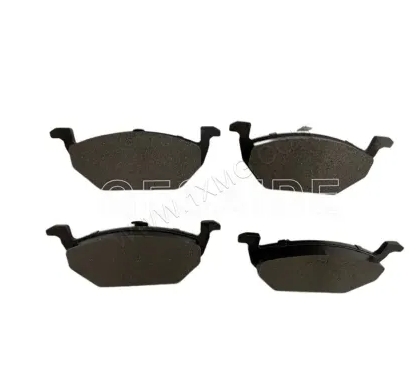When to Replace Brake Discs and Pads?
WHEN TO REPLACE BRAKE DISCS AND PADS
Brakes in action
When your foot pushes the brake pedal down it pushes against the master cylinder. This is basically a piston surrounded by brake fluid. The fluid moves down the brake lines where it forces the caliper to squeeze a pair of brake pads against a brake disc. This, in turn, slows the wheel down. The energy released from stopping your car’s motion is converted into waste heat, which has to be dispersed. As the disc has a relatively quick cooling time, this type of brake offers a better stopping performance than drum brakes and is widely used in current cars.
Considering the amount of times that you brake during an average car journey, it’s no wonder that brake pads and discs need to be replaced periodically.
How to tell if your brakes need replacing
Checking your brakes to ensure they are in good condition requires your senses of sight, hearing and touch. Together, this will give you a good idea of when to replace your brakes for a smoother and safer driving experience.
Your brakes may need replacing if you notice any of the following signs:
How electromagnetic shock absorbers improve electric bikes?
The Benefits of Using Steps to Winterize a Camper: How to Prepare Your RV for the ColdMonths
What Makes ODM Auto Coil Spring Distributor?
What are the differences between travel trailer vs camping trailer?
How to properly maintain a four season trailer?
Are Electromagnetic Shock Absorbers the Future of Cycling?
Key Questions to Ask When Ordering Off Grid Campers for Sale
Squealing noise:
Some squealing noise coming from the brakes is expected under normal driving conditions, depending on the cleanliness of your brakes, the materials used for your brake pads and the weather. However, a loud screeching sound is a warning that brake pads may need replacing. Some brake pads use a semi-metallic layer within the brake pad material or an external sensor designed to screech when the brake pad is due to be replaced. This screeching noise can be heard even when the brakes aren’t being used. If you wait too long at this point, the screeching noise will be replaced by a grinding noise which means the brake pads have worn down completely, and potentially can generate additional costs by damaging the brake disc.
Warning light:
Some cars have a warning light on the dashboard to let you know when your brakes need attention. Most sensors have the same lifespan as the brake pad, so they need to be replaced along with the brake pads. Before you rely on this method, it’s best to check your owners’ manual as not all cars are fitted with brake pad sensors.
Car pulling to one side:
If your car feels like it is pulling to one side or the other while you’re driving, it could be a sign of worn out brake pads or that the caliper guide pins or piston is sticking.
Visual check:
It’s a good idea to visually check your brakes regularly, for example every 10,000 miles (approximately 16,000 km). This is extremely important if your car doesn’t have sensors. You can visually check the brake pads by looking through the spokes of the car’s wheel. If less than 3mm of the brake pad is visible, then they need to be replaced.
Vibrations:
If you feel your car vibrating as you brake, it is a sign that your brake discs might be abnormally worn or have suffered thermal damage following severe braking.
How do electromagnetic shock absorbers benefit medical equipment?
How to Choose Electromagnetic Shock Absorbers for Wind Turbines
An Off-Grid Test of Airstream's Most Rugged Trailer
How Does Air Suspension for Trucks Work?
How much is the Avatar 11 car in China?
4 Pieces of Advice to Choose a 4-Season Camper
Solid Tires: Construction & Application




Comments
0